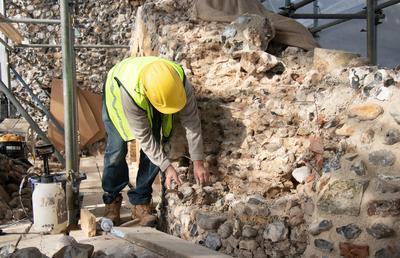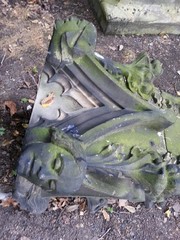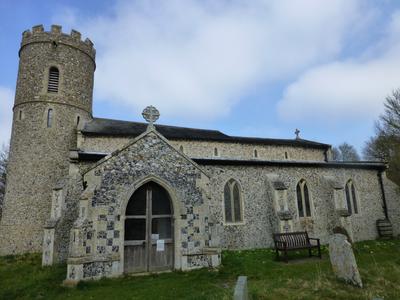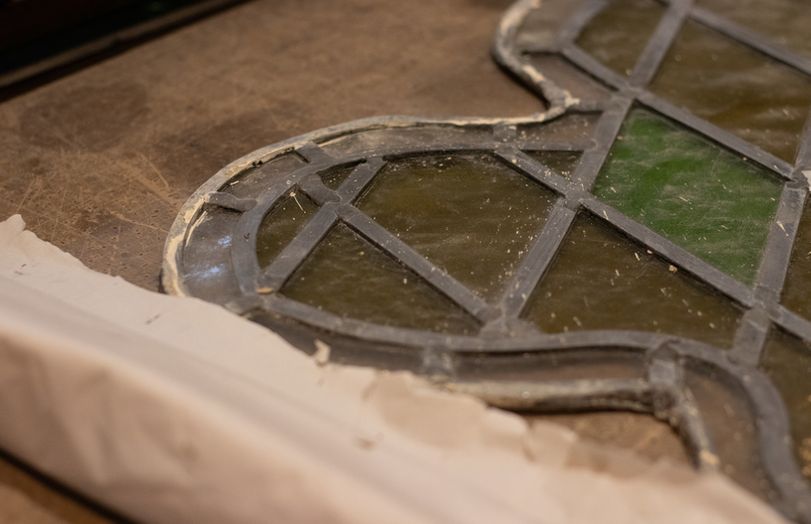The call of the craft skills
Last year, we were one of 445 heritage organisations across the country to receive a lifesaving financial boost from the Government thanks to the £1.57 billion Culture Recovery Fund to help through the coronavirus pandemic.
This vital funding came from the Culture Recovery Fund for Heritage and the Heritage Stimulus Fund - funded by Government and administered at arms length by Historic England and the National Lottery Heritage Fund. Both funds are part of the Government’s £1.57 billion Culture Recovery Fund which is designed to secure the future of Britain’s museums, galleries, theatres, independent cinemas, heritage sites and music venues with emergency grants and loans.
We’ve been busy since the announcement last October, with 26 of our churches across England in receipt of the £1,345,049 grant. The projects, which have now been completed, varied in size and scope:

Bungay, St Mary, Suffolk: St Mary’s is a landmark for miles around and the focal point of the market town of Bungay. The 15th century tower, with its tall pinnacles and the intricate stone tracery of the west window were in need of extensive urgent masonry repairs. Thanks to this grant, St Mary’s, which is part of the adjoining ruined Benedictine priory, will continue to be an active and vibrant community building in the heart of this historic Suffolk town.
Christ Church, Waterloo in Merseyside: Christ Church has a thriving Friends group, hosting a wide variety of activities which welcome over 40,000 visitors per year. Lockdown reduced all income to zero and only a few activities are just now restarting. This grant allowed the re-leading of the fine Shrigley and Hunt stained glass and urgent stone repairs to the west window. These specialist glazing and stone repairs, using traditional skills, have helped to sustain historic craft skills.

Shrewsbury St Mary: Shrewsbury is a large much visited church which needed high-level repairs, mainly to the pinnacles which had become dangerous. The vestry roof was sheeted following a lead theft so this project recovered the roof and stabilised the pinnacles along with associated high level masonry repairs.
Norwich St Augustine: High level masonry repairs were carried out at this medieval city church, which also suffered from vandal damage to its rainwater goods. These work will ensure the church can be offered for greater community use.
Saltfleeby All Saints, Lincolnshire: Saltfleetby’s chancel arch desperately needed stabilising to prevent its collapse. Work was to have started in March 2020, but the lockdown prevented it and since then our income has fallen dramatically putting the repairs on indefinite hold. Although the surrounding hamlet is tiny, we have a dedicated volunteer nearby who gives tours and talks with around 3000 visitors per annum.
Bristol St Paul: work on rope access for high level inspection and masonry repairs and vestry and apse roof repairs.
Evesham St Lawrence: Following the 2017 condition survey and a major fall of stone in 2018, a rope access inspection determined that major repairs to tower and spire stonework at high level were needed. The church is in a pedestrian precinct adjacent to the main high street which made these repairs very urgent.
Parson Drove St John, Cambridgeshire: Urgent repairs were made to the rainwater goods and roof covering to stop water ingress. Improvements to drainage were also made.
Bristol St John: A lead theft left Bristol St John's with only a temporary plastic and batten roof covering above the archway that Elizabeth I rode through on horseback to Bristol Old City through the town walls. Repairs were made to a more permanent roof.
Langport All Saints, Somerset: Poor design of the south porch and rainwater goods and bad drainage had led to plaster damage, staining and flooding of the boiler room. Work was done to identify and clear the below ground drainage and minimise water ingress to the church.
South Elmham All Saints, Suffolk: With its distinctive Suffolk round tower, All Saints is an idyllic rural church which had suffered from structural movement in recent years. Structural investigations and repairs to masonry were made to stabilize its ancient structure.

East Bradenham St Mary, Norfolk: The repair project for Grade I listed St Mary's Church consisted of the reinstatement of lead covering to south aisle roofs, repairs to flashings, copings and rainwater goods. Following two consecutive lead thefts (2014 ad 2015) St Mary's was in desperate need of a new roof covering. Due to lack of funding, for over six years the south aisle had been under temporary sheeting, which could no longer ensure weather tightness.
Farndish St Michael, Bedfordshire: The small rural church of St Michael is a peaceful retreat. Its 12th century ancient fabric was under threat, following a lead theft in 2015. The work here included the reinstatement of a permanent roof covering and masonry repairs.
Swingfield St Peter, Kent: A comprehensive programme of masonry repairs to the imposing St Peter’s tower ensured the integrity of its ancient fabric and prevented the damaging effects of water penetration through open joints and stone saturation.
Ellough All Saints, Suffolk: This 14th century rural church with its elegant interior was conserved by carrying out the urgent and essential repairs to the rainwater goods and roof timber fascias.
Aldwincle All Saints Northamptonshire: Work here included the removal of temporary plastic sheeting and reinstatement of copper covering, including timber repairs and new cover flashings. The programme of works also included work to rainwater goods and drainage, repairs to structural cracks and re-pointing. Internally, careful inspection and consolidation was made to the ancient plasterwork.
Akenham St Mary Suffolk: Essential roof overhaul, stopping water penetration that has begun at multiple points, including relaying lead valley gutter.
Saundby St Martin Nottinghamshire: Saundby’s slate roof had reached the end of its useful life, the underlying boards and battens were so rotten in places that even temporary patching was becoming impossible, risking water ingress and falling slates. This project saw the re-roofing of the church and high level masonry repairs.

